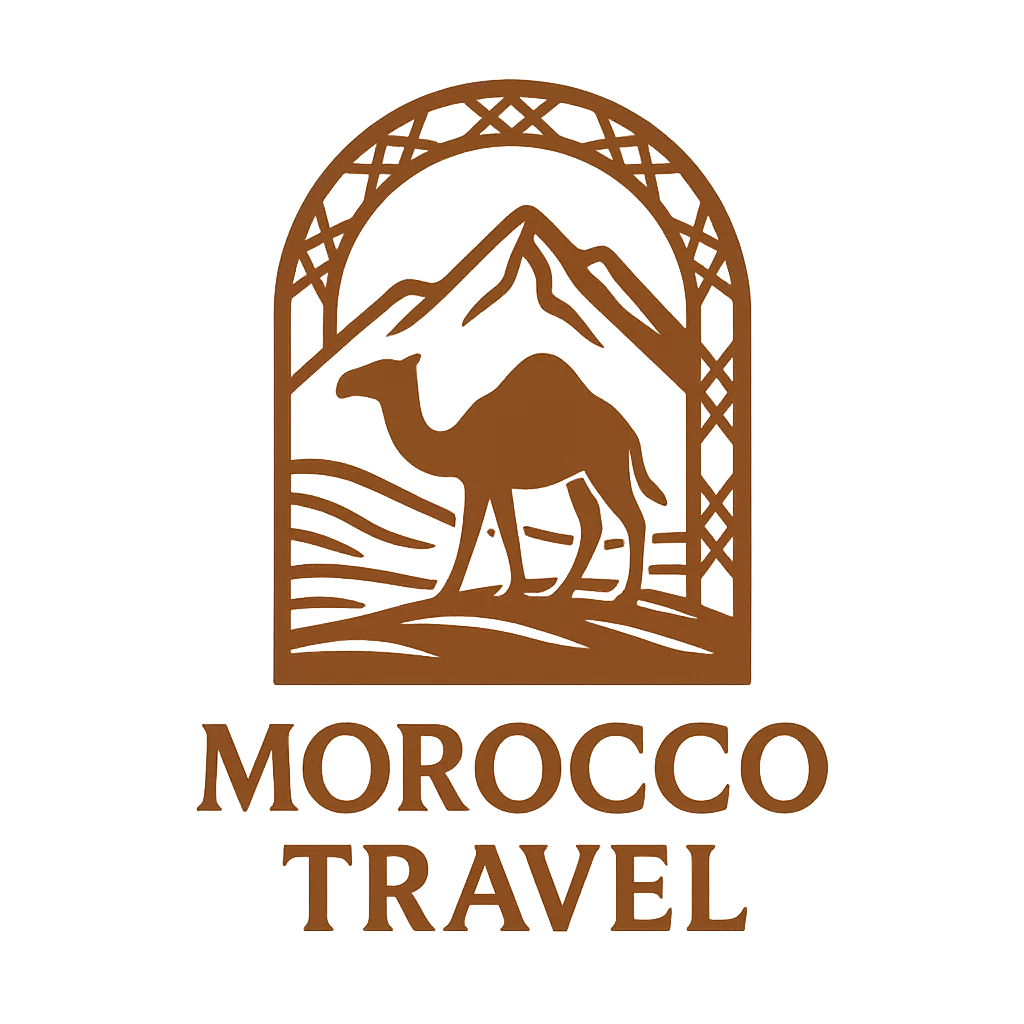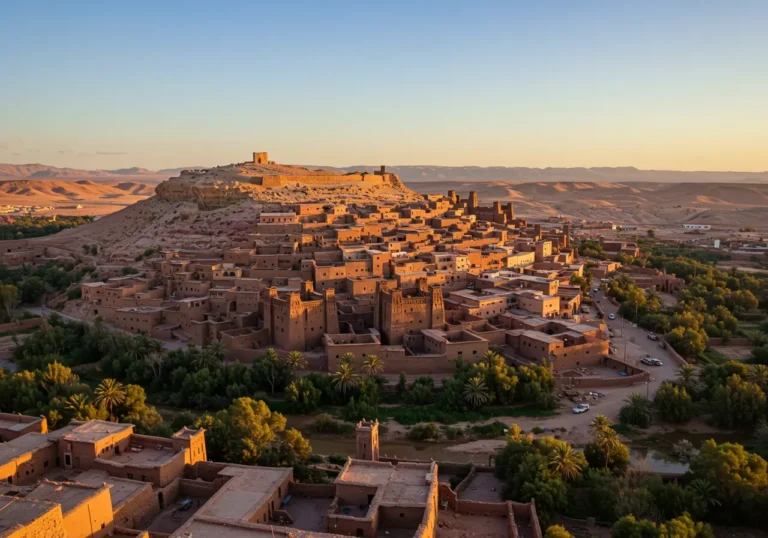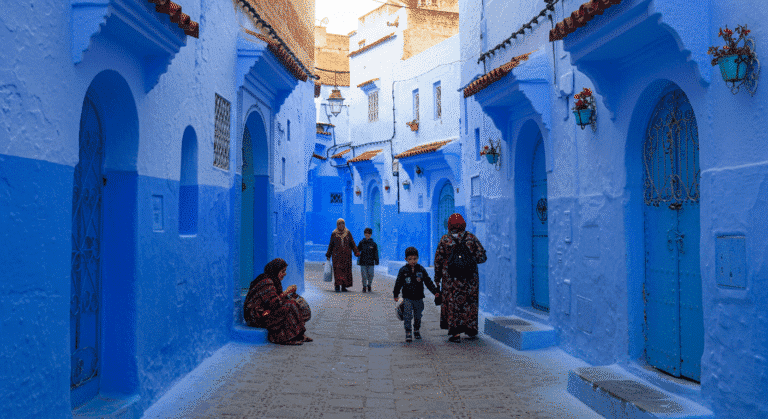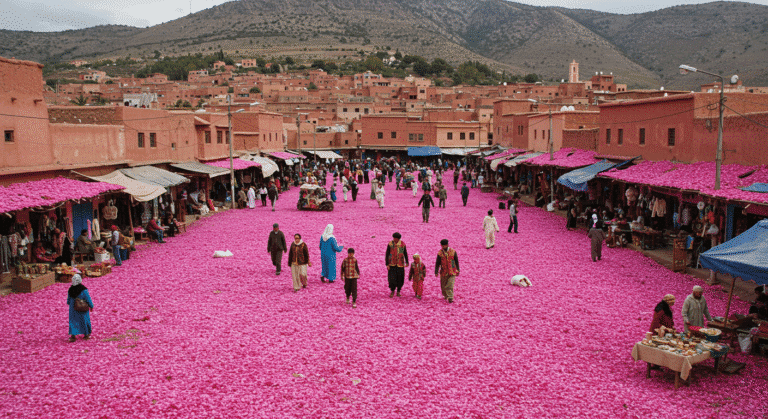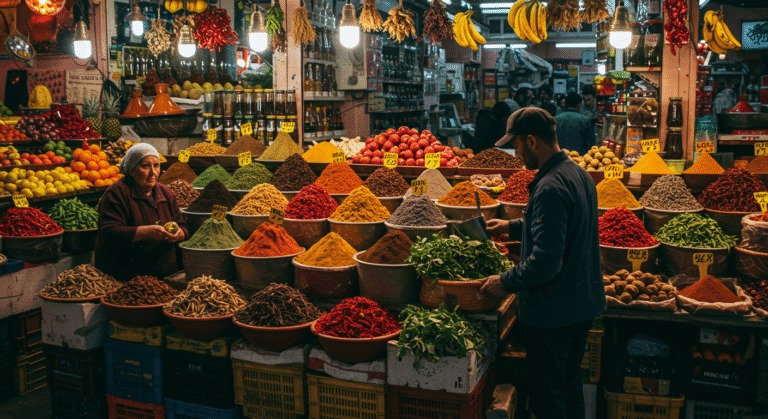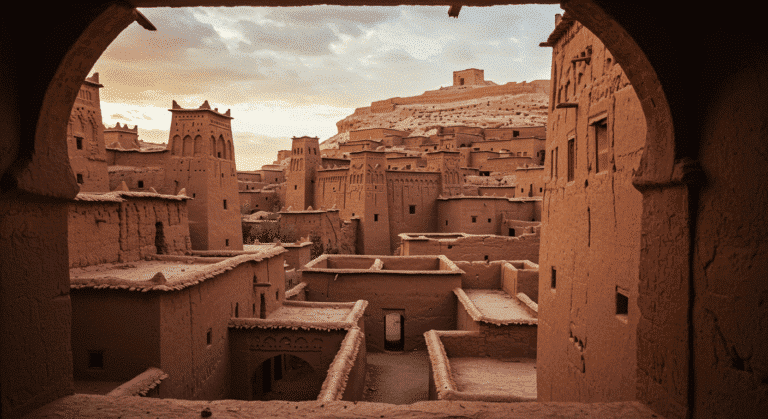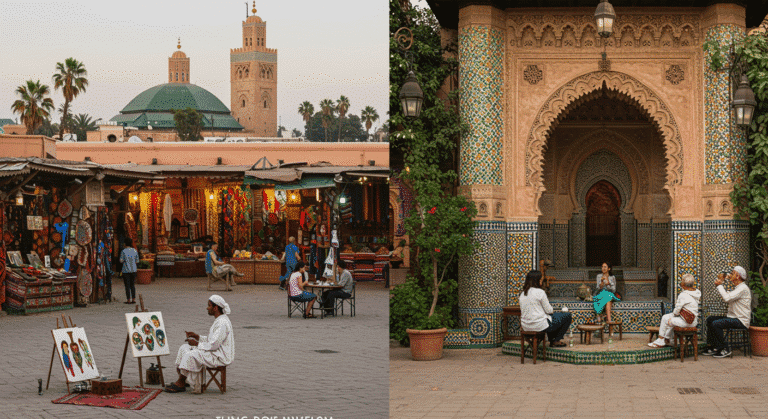Explore Morocco : Imperial Cities Tour
Did you know that Morocco’s four Imperial Cities have collectively served as the kingdom’s capital for over 1,200 years, with each dynasty leaving behind architectural masterpieces that tell the story of North Africa’s most fascinating civilization? Whether you’re a history enthusiast seeking to walk through centuries-old medinas or a cultural explorer drawn to Morocco’s vibrant traditions, this comprehensive guide reveals how to experience the Imperial Cities of Fes, Meknes, Rabat, and Casablanca in ways that transform typical sightseeing into profound cultural immersion.
From Marrakech, your gateway to Morocco’s imperial legacy, you’ll embark on a journey through four distinct cities that have shaped the nation’s identity. Each city offers unique perspectives on Moroccan history, from Fes’s medieval medina to Casablanca’s Art Deco boulevards, creating an unforgettable tapestry of experiences that few travelers fully discover.
Essential Packing Guide: Morocco’s Imperial Cities
Climate-Specific Essentials
Layered Clothing Strategy Morocco’s Imperial Cities experience diverse microclimates, making layered clothing your best friend. Pack lightweight, breathable fabrics for warm afternoons and a medium-weight jacket for cooler evenings, especially in Fes and Meknes where temperatures can drop significantly after sunset.
Footwear That Works
- Comfortable walking shoes with good grip for navigating cobblestone streets and uneven medina pathways
- Lightweight sandals for hot afternoons and easy mosque entry
- Closed-toe shoes for dusty archaeological sites like Volubilis
Cultural Consideration Items
- Long-sleeved shirts and pants for mosque visits and conservative areas
- Lightweight scarf or shawl for women to cover shoulders when needed
- Sun hat with wide brim for protection during extended outdoor exploration
Tech and Documentation
- Portable power bank (medinas often lack convenient charging spots)
- Universal adapter (Type C and E plugs for Morocco)
- Offline maps downloaded to navigate winding medina streets
- Travel insurance documents and embassy contact information
- Multiple payment methods (cash in Moroccan Dirhams, international cards)
Multi-Purpose Travel Items
Replace single-use items with versatile alternatives: a sarong serves as beach towel, picnic blanket, and modest covering; a daypack with hidden pockets protects valuables while exploring crowded souks; quick-dry clothing reduces luggage weight for multi-city travel.
Optimal Travel Timing: When Morocco’s Imperial Cities Shine
Peak Season Analysis (March-May & September-November)
Spring (March–May) and Autumn (September–November) offer the most pleasant weather across the country, with temperatures ranging from 20-25°C (68-77°F) during the day and comfortable evenings around 15°C (59°F).
Spring Advantages:
- Blooming orange trees in Rabat and Meknes create spectacular photo opportunities
- Perfect hiking weather for exploring Fes’s surrounding hills
- Lower tourist volumes than autumn peak season
Autumn Benefits:
- These months often offer a balance between good weather and reasonable prices
- Harvest season brings fresh dates and seasonal specialties
- Cultural festivals occur frequently during this period
Shoulder Season Secrets (December-February)
If you’re on a particularly tight budget, head to the country during the winter months when the crowds are at their thinnest and the prices are the lowest. Winter temperatures rarely drop below 10°C (50°F), making exploration comfortable with proper layering.
Winter Advantages:
- Hotel rates drop by 30-50% compared to peak season
- Authentic local life continues without tourist crowds
- Clearer skies provide excellent photography conditions
- Traditional hammams (public baths) offer warm respite
Seasonal Activity Variations
Summer months (June-August) work well for early morning and evening exploration, with midday breaks for traditional Moroccan mint tea in shaded courtyards. Ramadan timing affects restaurant hours and cultural site accessibility, requiring flexible planning but offering unique cultural insights.
Detailed 7-Day Imperial Cities Itinerary
Day 1: Marrakech to Casablanca (3 hours drive)
Morning (8:00 AM – 12:00 PM): Departure and Hassan II Mosque Begin your imperial journey with pickup from your Marrakech accommodation. The drive to Casablanca offers scenic glimpses of rural Morocco and olive groves. Upon arrival, visit the magnificent Hassan II Mosque, one of the largest mosques in the world, where non-Muslims can join guided tours (10:00 AM, 11:00 AM, 2:00 PM, 3:00 PM).
Afternoon (2:00 PM – 6:00 PM): Casablanca City Exploration Explore Casablanca’s Art Deco architecture in the Quartier Habous, visit the bustling Central Market, and stroll along the Corniche waterfront. The contrast between modern Casablanca and traditional Morocco becomes immediately apparent.
Evening Options:
- Budget: Local fish restaurants near the port (15-25 MAD/$1.50-2.50)
- Mid-range: Rick’s Café for Casablanca movie atmosphere (200-300 MAD/$20-30)
- Luxury: La Sqala for traditional Moroccan cuisine in elegant setting (400-500 MAD/$40-50)
Day 2: Casablanca to Rabat (1 hour drive)
Morning (9:00 AM – 1:00 PM): Royal Rabat Discovery Morocco’s current capital showcases both imperial history and modern governance. Visit the Royal Palace (exterior), explore the medieval Chellah Necropolis with its Roman ruins and Islamic architecture, and climb Hassan Tower for panoramic city views.
Afternoon (2:30 PM – 6:00 PM): Kasbah of the Udayas Wander through the blue and white painted streets of this 12th-century fortress overlooking the Atlantic Ocean. The Andalusian Gardens provide peaceful respite with traditional geometric designs and fountain sounds.
Cultural Immersion Opportunity: Visit local artisan workshops in the medina where traditional crafts like carpet weaving and metalwork continue unchanged for generations.
Day 3: Rabat to Meknes via Volubilis (2.5 hours total)
Morning (8:30 AM – 12:00 PM): Volubilis Roman Ruins Volubilis (Walili) has been recognized by UNESCO as a world heritage site. These remarkably preserved Roman ruins feature intricate mosaics, including the famous Bacchus and Four Seasons mosaics. Hire a local guide (100-150 MAD) for historical context about Roman North Africa.
Afternoon (1:00 PM – 6:00 PM): Imperial Meknes Known as Morocco’s Versailles, Meknes impresses with massive gates like Bab Mansour and the sprawling Heri es-Souani granaries. Visit the Mausoleum of Moulay Ismail and explore the underground tunnels that once stored provisions for 12,000 horses.
Photography Tips: Golden hour (one hour before sunset) transforms Meknes’s yellow walls into warm, glowing backdrops perfect for architectural photography.
Day 4-5: Fes – The Medieval Masterpiece
Day 4 Morning (9:00 AM – 1:00 PM): Fes el-Bali Medina The tour will take you into the medina of Fez through Bab Boujloud (the Blue Gate), where you will discover the ancient streets and neighborhoods, as well as Al-Qarawaiyin University. Founded in 864 AD and still in operation today, this university represents the world’s oldest continuously operating higher education institution.
Navigate the maze-like medina with its 9,000 narrow alleys, discovering traditional souks, the famous Chouara Tannery with its colorful dyeing vats, and craftsmen workshops where techniques haven’t changed for centuries.
Day 4 Afternoon (2:30 PM – 6:00 PM): Cultural Deep Dive Visit traditional Moroccan homes (riads) converted to museums, observe master craftsmen creating intricate zellige (mosaic tilework), and experience the sensory overload of spice markets where vendors offer samples of ras el hanout and other traditional blends.
Day 5: Fes Surroundings and Modern City Explore Fes el-Jdid (New Fes) with its mellah (Jewish quarter), visit the Borj Nord Museum for panoramic medina views, and take a traditional cooking class where you’ll learn to prepare tagine, couscous, and mint tea.
Day 6-7: Return Journey to Marrakech
Flexible Route Options:
- Direct return (4 hours): Maximum time in each imperial city
- Scenic route via Middle Atlas: Include Ifrane (Morocco’s Switzerland) and cedar forests
- Cultural route via Beni Mellal: Traditional Berber villages and olive groves
Comprehensive Budget Breakdown
Transportation Costs
- Private tour with driver/guide: $100-150 per day (1-4 people)
- Small group tour: $80-120 per person per day
- Car rental with fuel: $40-60 per day plus fuel ($30-40 daily)
- Bus transportation between cities: $5-15 per segment
- Train travel (Casablanca-Rabat-Meknes): $3-8 per segment
Accommodation by Category
Budget Options ($15-35/night):
- Traditional riads with shared bathrooms
- Clean hostels in medina areas
- Guesthouses with basic amenities
Mid-Range Comfort ($40-80/night):
- Private riad rooms with en-suite bathrooms
- Boutique hotels with traditional architecture
- Modern hotels with air conditioning and WiFi
Luxury Experience ($100-300/night):
- Historic palaces converted to hotels
- Rooftop terraces with medina views
- Full-service spas and fine dining
Daily Meal Budgets
- Street food and local cafés: $5-10 per day
- Restaurant meals: $15-25 per day
- Fine dining experiences: $30-50 per day
Activities and Entrance Fees
- Hassan II Mosque guided tour: $13 (120 MAD)
- Museum entries: $1-3 each (10-30 MAD)
- Local guides: $15-25 per half-day (150-250 MAD)
- Cooking classes: $25-40 per person (250-400 MAD)
- Traditional hammam experience: $10-20 (100-200 MAD)
Total Trip Cost Estimates (7 days)
- Budget travel: $200-350 per person
- Mid-range comfort: $400-700 per person
- Luxury experience: $800-1,500 per person
Costs exclude international flights and travel insurance
Sustainable Travel and Cultural Immersion
Supporting Local Communities
Choose accommodations owned by Moroccan families rather than international chains. Family-run riads often provide more authentic cultural exchange and directly benefit local communities. Many offer home-cooked meals using ingredients from neighborhood markets, creating economic ripple effects throughout the community.
Eco-Friendly Transportation
Accommodating up to 15 people with transport by minivan reduces per-person carbon footprint compared to individual car rentals. Consider train travel between cities when possible – Morocco’s rail system connects all Imperial Cities efficiently while offering scenic countryside views.
Authentic Cultural Experiences
- Artisan workshops: Learn traditional crafts directly from master craftsmen rather than observing from tourist groups
- Community-based tourism: Stay in Berber villages during transit between cities
- Volunteer opportunities: Participate in local conservation projects or teaching programs
- Cultural exchange programs: Arrange meals with local families through reputable organizations
Responsible Shopping Guidelines
Purchase handicrafts directly from artisans in their workshops rather than middleman souks. This ensures fair compensation and authentic products. Ask about the origin of items – genuine Moroccan crafts support traditional skills passed down through generations.
Culinary Adventures: A Feast for the Senses
Signature Dishes by City
Fes Specialties:
- Fassi Tagine: Slow-cooked lamb with apricots and almonds, perfected over centuries in Fes medina kitchens
- Pastilla: Delicate pastry layers filled with pigeon (or chicken), almonds, and cinnamon, traditionally served at celebrations
- Harira soup: Rich tomato-based soup with lentils, chickpeas, and aromatic herbs, originally created to break Ramadan fasts
Meknes Delicacies:
- Couscous Belboula: Barley couscous unique to the region, often served with seasonal vegetables
- Meknes olives: Sample various varieties at local markets, from mild green to intensely flavored black olives
Rabat Coastal Cuisine:
- Fresh seafood tagines: Featuring daily catches from the Atlantic coast
- Rfissa: Comfort food combining chicken, lentils, and torn msemen (Moroccan pancakes)
Casablanca Modern Fusion:
- Contemporary interpretations of traditional dishes in upscale restaurants
- French-influenced pastries and café culture
Market Exploration Strategy
Visit markets early morning (8:00-10:00 AM) for freshest ingredients and cooler temperatures. Engage vendors in friendly conversation – many speak multiple languages and enjoy sharing cooking tips. Sample before purchasing, and don’t hesitate to ask about preparation methods.
Cooking Class Recommendations
Fes: Traditional family homes offer intimate cooking experiences with market shopping, preparation, and communal dining. Classes typically last 4-6 hours and include recipe cards for home recreation.
Budget-Friendly Option: Join group classes in community centers (25-35 MAD) Premium Experience: Private chef instruction in historic riads (400-600 MAD)
Dietary Accommodations
Vegetarian travelers find abundant options in tagines, couscous dishes, and salads. Clearly communicate dietary restrictions using basic Arabic phrases or written notes. Most restaurants accommodate special requirements with advance notice.
Common Pitfalls and How to Avoid Them
Navigation Challenges
Problem: Getting lost in Fes medina’s labyrinthine streets Solution: Hire official guides at tourist offices (fixed rates, identification badges). Download offline GPS maps, but remember that GPS accuracy decreases in narrow medina alleys. Learn key Arabic phrases: “Fin kayn…?” (Where is…?) and carry your riad’s business card.
Cultural Misunderstandings
Problem: Inappropriate dress causing uncomfortable situations Solution: Pack conservative clothing covering shoulders and knees. Women should carry lightweight scarves for mosque visits and conservative neighborhoods. Men should avoid shorts in religious areas.
Transportation Confusion
Problem: Unreliable local transport timing and routes Solution: Build flexibility into itineraries. Allow extra time between cities, especially during religious holidays when schedules change. Keep contact information for reliable taxi services recommended by your accommodation.
Financial Security
Problem: Currency exchange confusion and overcharging Solution: Exchange money at official banks or hotels for guaranteed rates. Learn basic price ranges: mint tea (5-10 MAD), taxi across city (20-40 MAD), museum entry (10-30 MAD). Always confirm prices before services and carry small denominations for tips and small purchases.
Communication Barriers
Problem: Language difficulties in emergency situations Solution: Download translation apps with offline capability. Learn essential Arabic phrases: “La, shukran” (No, thank you), “Kam hada?” (How much?), “Afinak” (Excuse me). Carry your accommodation’s address written in Arabic script.
Safety and Practical Wisdom
Health Preparations
Visit your healthcare provider 4-6 weeks before travel for recommended vaccinations (Hepatitis A, Typhoid recommended; Yellow Fever if coming from affected areas). Pack prescription medications in original containers with doctor’s letters if necessary.
Travel Insurance Essentials
Comprehensive coverage should include medical evacuation, trip cancellation, and personal belongings protection. Adventure activities like hiking in surrounding mountains may require additional coverage. Keep emergency contact numbers and policy details accessible offline.
Money Management
ATM Strategy: Use bank-affiliated ATMs for best exchange rates and security. Notify your bank of travel plans to avoid card blocks. Carry backup payment methods including cash in Euros (widely accepted) and a second debit/credit card.
Tipping Guidelines:
- Restaurant servers: 10-15% if service charge not included
- Hotel staff: 10-20 MAD per service
- Tour guides: 50-100 MAD per day group tip
- Taxi drivers: Round up to nearest 5 MAD
Emergency Information
Important Numbers:
- Moroccan Emergency Services: 15
- Tourist Police: 19
- Your Embassy contact information
- Travel insurance 24-hour hotline
Health Resources:
- Public hospitals available in all Imperial Cities
- Private clinics offer faster service with English-speaking staff
- Pharmacies (marked with green cross) widely available
- Travel clinics in major cities for tourist-specific health needs
Technology and Communication
Internet Access: WiFi available in most accommodations and cafés. Purchase local SIM cards (Maroc Telecom, Orange, or Inwi) for reliable mobile internet. Data packages start around 50 MAD for weekly unlimited plans.
Power and Electronics: Morocco uses 220V electricity with Type C and E plugs. Many riads have limited electrical outlets, so pack extension cords with universal adapters.
Your Imperial Cities Adventure Awaits
Morocco’s Imperial Cities offer an unparalleled journey through time, where medieval medinas coexist with modern boulevards, and ancient traditions thrive alongside contemporary life. From Fes’s labyrinthine souks to Casablanca’s Art Deco elegance, each city reveals different facets of Morocco’s rich cultural tapestry.
The key to transforming your Imperial Cities tour from ordinary sightseeing into extraordinary cultural immersion lies in embracing the unexpected. Allow extra time for spontaneous conversations with local artisans, accept invitations to mint tea with new acquaintances, and remain open to experiences that don’t appear in guidebooks.
Your journey through Morocco’s Imperial Cities will challenge preconceptions, expand cultural understanding, and create memories that intensify rather than fade with time. The ancient walls of these royal cities have witnessed centuries of human stories – now it’s time to add your own chapter to their ongoing narrative.
Ready to begin your Imperial Cities adventure? Start planning your journey today by researching accommodation options in each city, booking transportation between destinations, and learning basic Arabic phrases that will enhance your cultural connections.
Share your own Imperial Cities discoveries in the comments below, and help fellow travelers unlock the authentic magic of Morocco’s royal heritage.
FAQs
Do I need a visa to visit Morocco’s Imperial Cities?
Citizens of most Western countries receive automatic 90-day tourist visas upon arrival. Ensure your passport has at least 6 months validity remaining. Check current requirements with Moroccan consulates as policies occasionally change.
Is it safe for solo female travelers to visit the Imperial Cities?
Yes, with standard precautions. Choose reputable accommodations, dress conservatively, avoid walking alone after dark, and trust your instincts about situations and people. Many solo female travelers explore Morocco successfully each year.
What languages are spoken in the Imperial Cities?
Arabic and Berber are official languages. French is widely spoken due to colonial history. English is common in tourist areas, hotels, and restaurants. Learning basic Arabic greetings enhances cultural interactions significantly.
Can I visit mosques as a non-Muslim?
Most mosques are closed to non-Muslims, with the notable exception of Hassan II Mosque in Casablanca, which offers guided tours. You can admire exteriors and courtyards of other mosques while respecting religious boundaries.
How much should I budget for souvenirs and handicrafts?
Authentic Moroccan handicrafts range from 50 MAD for small items to 2000+ MAD for high-quality carpets or leather goods. Always negotiate prices, starting at roughly 30-40% of initial asking prices. Factor 200-500 MAD for meaningful souvenirs.
What’s the best way to handle persistent vendors in medinas?
Polite but firm refusal works best: “La, shukran” (No, thank you). Avoid extended eye contact with aggressive vendors, keep walking, and don’t feel obligated to buy something just to end uncomfortable interactions. Official guides can help navigate these situations.
Are credit cards widely accepted?
Major hotels, upscale restaurants, and some shops accept credit cards, but cash remains king, especially in medinas and for small purchases. Carry sufficient Moroccan Dirhams for daily expenses, tips, and market purchases.
